by Robert Schribbler,
The amount of methane in the Arctic hydrates alone is estimated as 400 times more than the global atmospheric CH4 burden. The question is timescale of the methane liberation: gradual, abrupt, or something in between. Satellite monitoring of methane over the Arctic Ocean is necessary. — Dr. Leonid Yurganov
* * * *
Depending on who you listen to, it’s the end of the world, or it isn’t. A loud and lively debate that springs up in the media every time a new sign of potential methane instability or apparent increasing emission from methane stores is reported by Arctic observational science.
On one side of this debate are those declaring the apocalypse is nigh due to, what they think, is an inevitable catastrophic methane release driven by an unprecedentedly rapid human warming of the Arctic. A release large enough to wipe out global human civilization. These doomsayers are fueled by a number of scientists (usually Arctic observational specialists) who continue to express concern — due to an increasing number of troubling, if not yet catastrophic, rumblings coming from the Arctic carbon store. The Arctic is warming faster than it ever has, they accurately note. And this very rapid rate of warming is putting unprecedented and dangerous stresses on carbon stores, including methane, that have lain dormant for many millions of years. The risk of catastrophic release, therefore, is high enough to sound the alarm.
On the other side are a number of mainstream news outlets backed up by a group of established scientists. This group claims that there’s generally no reason to worry about a methane apocalypse. The methane releases so far are relatively small (on the global scale) and there are all sorts of reasons why future releases will be moderate, slow in coming, and non-catastrophic. The methane store most pointed toward by methane catastrophists — a frozen water methane known as hydrate — tends to self-regulate release, in most cases, acting as a kind of pressure valve that would tend to moderate emission rates and prevent instances of catastrophic eruption (please see The Long Thaw).
A third group appears to have somewhat sidestepped an otherwise polarized discourse. Outlets like ThinkProgress and others have continued to quietly report observations without drawing conclusions, one way or the other, on the issue of near-term methane apocalypse. They point, instead, to what are, admittedly, some rather odd and scary methane rumblings going on near the pole. Among this ‘middle ground’ group are a survey of about 100 researchers who’ve identified a likely carbon release (including both methane and CO2) from the Arctic equaling between 10 and 35 percent of the human emission by the end of this century (please see High Risk of Permafrost Thaw). It is a ‘middle ground’ that is troubling enough. For 10-35% of the human carbon emission coming from the Arctic is a massive release in the range of 1 to 3.5 gigatons of carbon (with a fraction as volatile methane). If such an emission does materialize, it will equal (on the low end) or exceed the annual rate of environmental carbon release last seen during the PETM — a hothouse extinction 55 million years ago that turned the oceans into killers and forced life on land to shrink in size and burrow to avoid the awful heat and stifling atmosphere of that age.
Regardless of where you stand in this discourse, the Arctic itself continues to provide cause for both debate and appropriate concern.
Methane Overburden
Barrow surface methane observations by NOAA ESRL show methane readings that range about 60 ppb above the global average. Note the 50 ppb increase over the past decade coincident with numerous ‘outlier’ spikes [green cross hatches] from local sources. Image source: NOAA ESRL.
Perhaps the most obvious sign that there’s something not quite right going on in the Arctic is a large overburden of both methane and CO2 in the region. Looking at NOAA’s ESRL site, we find that methane levels at Barrow, Alaska (one of just a handful of Arctic sensor stations in the ESRL network), are in the range of 1,910 parts per billion. By comparison, NOAA’s Mauna Loa Station, on the edge of the tropics and well away from the polar overburden, records about 1,850 parts per billion (ppb).
At current rates of atmospheric methane increase, it will take about 9 years for Mauna Loa to catch up to where Barrow is now. But by that time Barrow may be pushing 1,970 ppb or more. In addition, all Arctic stations record numerous anomalous spikes in methane from local sources. The ESRL site lists these spikes as outliers. But, for all the ESRL reporting stations, the Arctic stations are the ones that host by far the most numerous such outliers. The local methane sources, therefore, appear to be quite active in the Arctic. An observation that polar scientist, Dr Jason Box, admits keeps him awake at night.
Global distribution of methane averaged over 2011 by NASA/AIRS. Note the very high concentrations in the Arctic region. For this map, the highest concentrations occur in the Yedoma region of Russia, a region of multiplying methane emitting tundra melt and thermokarst lakes [see below]. Image source: NASA/AIRS.
Perhaps the most reliable way to sample the Arctic methane overburden is to get a full view of it through satellite sensors. The above NASA image taken in 2011 shows a massive methane overburden in the upper latitudes that slowly diffuses southward. Note the highest concentrations in this image are near the permafrost zones in Yedoma in northeastern Russia.
NOAA also provides its METOP array which frequently finds methane concentrations at above 2,400 parts per billion at the 10,000 to 20,000 foot level in broad blankets over the Arctic region — especially in the months of September through November and then again in January. Again, these measures are the highest in any region of the globe, and they occur directly over the Arctic.
Dr. Leonid Yurgonov uses the AIRS/AQUA satellite sensor to provide a record of Arctic methane overburden. One that is clearly visible here:
In the above image we see methane measurements at the 18,000 foot altitude above the Arctic and upper latitudes. The progression is from January of 2009 (furthest left) to January of 2013 (furthest right). Orange coloration represents methane readings in the range of 1,850 to 1,950 parts per billion. Deep red coloration is in the range of 2,000 parts per billion. Note the shift from blues and yellows (1,700-1,800 ppb) to oranges and reds (1,850-2,000 ppb) during the 5 years from 2009 to 2013.
So not only does the AIRS sensor show overburden, but it also finds methane build-up over the period measured.
These combined measures alone provide more than enough evidence of a methane overburden in the far northern region, together with a rate of buildup that maintains the overburden and leads the global methane measure. Cause for enough concern among Arctic researchers that they have tended to make statements like this:
The amount of methane in the Arctic hydrates alone is estimated as 400 times more than the global atmospheric CH4 burden! The question is timescale of the methane liberation: gradual, abrupt, or something in between. Satellite monitoring of methane over the Arctic Ocean is necessary! — Dr. Leonid Yurganov, AGU, 2012
Steady Increase So Far
But even if we do have both a buildup of methane in the polar region together with what looks like an ominous overburden, we should be quick to point out that the rate of increase, especially on the global scale, has been mostly steady so far.
Under any catastrophic methane release scenario, we would expect Arctic methane to rapidly jump higher, dragging the global measure along with it. In general, we’d expect almost all sensors to pick up the signal of an exponentially ramping curve. And we don’t see that as yet.
To this point, Dr. Yurganov’s statement from the 2012 AGU presentation is informative:
Current methane growth in the Arctic, including 2012, is gradual… If a sudden venting (bubbling) of methane would happen due to intense hydrates destruction, IASI would be able to detect it NRT.
Though there has been a bit of an uptick in global and Arctic methane increase rates during recent years, they have maintained about a 4-7 ppb annual increase since ending a decade-long pause from 1995 to 2005.
It is worth noting, however, that the global methane measure increasing at an exponential rate would be a trailing measure indicator — occurring only in the wake of any catastrophic or large-scale release. So, as a predictor, the global methane measure isn’t very useful.
Thermokarst Lakes
Which brings us to the key question — what are the leading indicators of major methane releases or of catastrophic releases of the kind some have feared?
Since we have never directly observed one, and since large-scale or catastrophic releases are merely theoretical at this time, we can only point toward evidence of past large scale releases, and an ongoing, but apparently growing, smaller scale release happening now.
The first such related observation may well have come in the form of an increasing methane emission from thermokarst lakes. Thermokarst lakes form when sections of permafrost thaw and collapse, creating a depression. In wet regions, water soon pools within these hollows. Organic material at the bottom of the pool is provided by thawing permafrost. In the anaerobic lake bottom environment, methane is generated as the organic material is broken down.
Over recent years, this increasingly widespread thermokarst thaw and formation has resulted in a number of Arctic ‘fire lakes’ popping up — lakes whose methane emissions are so great that bubble concentrations are high enough to burn. During winter, these bubbles are trapped beneath ice and when released, create an explosive mixture.
Methane production in a thermokarst lake. Image source: The Royal Society.
From the 1970s through the mid 2000s, it is estimated that some regions of the Arctic experienced as much as a 58% increase in methane release due to thermokarst lake formation alone. An important measure since a number of studies found that thermokarst lake formation was one of the primary drivers of methane release from the Arctic at the end of the last ice age.
But as a catastrophic release driver, thermokarst lake formation is relatively mild, even if it is capable of pushing Arctic methane release levels higher. As such, the next indicator — a discovery of large methane releases from the ocean floor in the Arctic — was somewhat more concerning.
Oceanic Plumes
For as of 2011 an expedition to the East Siberian Arctic Shelf (ESAS) found massive plumes of methane, as large as one kilometer across, emitting from the shallow sea bed region off northeastern Siberia. The researchers, Shakhova and Semiletov, seemed very concerned that this might be a sign of a potential, impending, large-scale release on the order of 1 to possibly 50 gigatons. The methane stores for the ESAS alone were massive — in the range of hundreds of gigatons. So even a fractionally small release from this source could be devastating. For reference, a 1-gigaton release would more than double the annual methane release from all global human and natural sources. A 5-gigaton release, on its own, would be enough to more than double atmospheric methane concentrations. And since methane traps heat more than 20 times as efficiently as CO2 over a century time-scale, such a release would result in far more rapid warming than previously predicted by scientific bodies such as the IPCC -- a very rapid rate of warming that would be extraordinarily difficult for human civilizations to adapt to.
Of course this announcement set off amazing controversy. We couldn’t be certain what the source of this methane was, some said. Was it submerged permafrost methane? Was it hydrate? Was it free gas methane? And how could we be certain that this release hasn’t been ongoing for some time?
If such a methane release was building up to a catastrophic event, what mechanism would be the cause? In other words, how might gigatons of methane suddenly blow up from the sea bed?
Lower troposphere methane concentrations over the Kara, Laptev, and East Siberian Seas during September-November of 2009-2012 show overburden in active oceanic release zones. Image source: Dr. Leonid Yurganov.
This point is worth a bit of further exploration. The issue is that the most unstable form of methane when warmed is the methane hydrate store mentioned above. Methane hydrate is a frozen combination of gas methane and water. It crystallizes into a kind of fire ice under high pressure and in low temperature environments. It typically forms about 200-600 feet below the sea bed as methane bubbling up from warmer regions below contacts seawater, high pressure and cold. If the layer is warmed under human heat forcing, the hydrate thaws, releasing its gas. The gas now becomes stored in pockets under high pressure. The gas below pushes against the sea bed above and some of it bubbles out (and these releases are found in the large plumes along the ESAS and elsewhere). But most of it, so far, has remained entombed.
What, then, could cause the large stores of entombed gas releasing from destabilizing hydrate, to break through hundreds of feet of seabed — hitting first ocean water and then atmosphere?
Over the past four years conjecture over this issue has raged on. Swelling at points when Shakhova and Semiletov would make a new announcement and then ebbing as a wave of reassurances would rush in from scientific critics and mainstream media.
By summer of 2014, a discovery of new, large-scale plumes in the Laptev Sea by the SWERUS C3 expedition set off another wave of media speculation and controversy. But as the dust settled, it became clear that the Laptev sea floor had been added to the list of methane hot spots in the Arctic, following in the footsteps of the ESAS region as an area to watch for potential increasing rates of release.
Tundra Blowholes
In nature, gasses under high and increasing pressure often find pathways for escape. Typically, the escape is gradual — we see this in volcanic regions in the release of magma gasses through cracks in the earth and through vent pathways. And sometimes the escape is far more violent — with hot volcanic gasses blowing away even hills or mountainsides in spontaneous eruption, or bubbling out, en masse, through volcanic lakes to spill toxic plumes over a countryside.
The gas source in question for Arctic methane release — hydrate — is very large. Even at the low end, it is estimated that hundreds of gigatons of the stuff lie buried beneath frozen tundra ground or in ocean stores beneath the seabed. A gigaton is one billion tons. A billion tons of frozen hydrate would cover roughly one cubic kilometer. One cubic kilometer of a flammable gas under high pressure.
And in the Arctic, hundreds of billions of tons lie under rapidly warming permafrost both on land and in the submerged seabed.
Graphic of permafrost and gas hydrate methane by Carolyn Ruppel. Note that 75% of the ESAS sea floor is in the range of 50 meters in depth or shallower and that buried hydrate deposits can be found in the range of 200-300 feet. Image source: Methane Hydrates and Contemporary Climate Change.
As of 2011, some scientists were warning that we were seeing a slow release from some of this submerged hydrate store in the ESAS. By 2014, the potential slow release had expanded into the Laptev Sea.
But that year, 2014, also saw something else. A potential catastrophic release of methane. For in the frozen region of Yamal, Russia, the earth near a remote Siberian village began to destabilize. Soon after, according to eyewitness accounts, the area began to smoke. Then, with a bright flash, the ground erupted.
When the smoke cleared, a massive crater was found where only flat, frozen tundra had been before. A giant plug of frozen earth had been ejected violently. And all that remained was an ominous gray-black crater.
Yamal Crater as seen from the air. Image source: The Siberian Times.
Researchers investigating the crater found 10% atmospheric methane concentrations at its bottom.
Overall, it was estimated that about 11 tons of TNT equivalent explosive force was enough to remove this 100+ foot wide and 220 foot deep plug from the Earth. Exploding and burning methane in the range of about 10 tons would have been enough to generate the crater. Gas under high pressure in the hundred+ ton range may have been able to explosively excavate this hole.
As a result, the amount of methane in question for this single event was relatively small, especially when one considers the hundreds of billions of tons in the still frozen store.
It appeared that the rapidly warming Yamal territory and a broad region of nearby northwestern Siberia may be seeing tundra warming extending deep enough to begin to destabilize pockets of relic hydrate. The hydrate in some of these pockets is beginning to thaw and catastrophically erupt to the surface.
By early 2015, a total of seven primary craters and scores of secondary craters of this kind had been discovered throughout this section of Siberia. Local Russian authorities were very concerned — moving seismographs into the area to monitor ground stability in a region that includes one of their largest natural gas developments.
A large upheaval of this kind in the wrong place would easily rupture a pipeline or destroy sections of a gas production operation. But the deeper irony was that continued gas production in this region was contributing to a problem that may well be making the ground far, far less stable and setting up the risk for even larger-scale eruptions.
For the Yamal crater wasn’t important due to the relative size of its methane release — the release was very small in the global context. A mere drop in an ocean of greenhouse gasses being emitted now by humans. It was important due to two other, and perhaps more stark, reasons.
The first was the very violent nature of its release — an eruption similar to that of a volcano — representing a severe geophysical upheaval that was all too likely triggered by a rapid human warming of the tundra. This kind of release, as the Russians in the region were quick to realize, represented a danger to both inhabitants and to infrastructure.
But the second reason is, perhaps, more important. It is the fact that the Yamal crater may well be evidence of the kind of mechanism for catastrophic methane release some of the more conservative scientists have been demanding. It’s possible, then, that the Yamal crater is in microcosm, what a truly catastrophic methane release might look like on a much larger scale. And the critical question to ask here is — could there be a connection between the methane blowholes we are now observing in the Arctic and a number of mysterious and gigantic craters discovered on the sea bed around the world?
Giant Craters on the Seabed
In 2013, marine geophysicist Dr. Bryan Davy from GNS Science found what may be the world’s largest gas eruption craters on the seafloor, about 310 miles east of Christchurch, New Zealand.
The craters, which the researchers called ‘pockmarks,’ formed in an active gas zone along the ocean bottom. They measured from 250 meters to 7 miles in diameter and about 300 feet deep, with the largest crater able to encompass all of lower Manhattan.
Giant craters off Christchurch, New Zealand, are thought to have formed due to large gas eruptions during previous episodes of sea bed warming. Could human warming be setting off something similar for the Arctic? Image source: Mysterious Giant Crater Like Structure Found Near New Zealand.
The craters are thought to have formed during ice ages when sea levels lowered off New Zealand causing the sea bed to warm and gas hydrate to thaw. Eventually, the gas is thought to have erupted into the surrounding water with a portion bubbling up into the atmosphere.
GEOMAR seismic records indicated active gas pockets beneath the crater zones. Dr. Joerg Bialas, a GEOMAR scientist, noted:
Gas release from the larger pockmarks may have been sudden and possibly even violent, with a massive volume being expelled into the ocean and atmosphere within hours or days.
The 300 foot depth of the craters touched the hydrate stability zone, even as their large size indicated that massive pockets of the gas lifted away large sections of sea bed suddenly and violently. It’s the kind of rapid destabilized gas release that may well represent a worst-case Arctic warming scenario.
Cause for Appropriate Concern
So the question must be asked — is the Yamal crater physical validation of a catastrophic methane hydrate release mechanism that has circulated, as theory, through the geophysical sciences for decades? One that involves large eruptions that displace massive sections of earth and seabed during a violent release process. Are the Siberian methane blowholes smaller examples of what can happen on a much greater scale? And does the methane overburden in the Arctic, the documented increasing thermokarst lake release, the sea bed methane release in the Laptev and ESAS, and the new formation of methane blow holes in Yamal, in the context of a rapidly warming Arctic tundra and sea bed (seeing unprecedented rates of warming), represent a growing risk for this kind of release?
Under even a ‘moderate’ 1 to 3.5 gigaton Arctic carbon release rate by end century given by the survey of 100 Arctic scientists, there will likely be more than enough potential freed methane to include large-scale catastrophic releases similar to the kind seen off New Zealand and elsewhere (250-meter to 7-mile-wide cratering events).
In this context, the issue is not one of ‘apocalypse now’ or ‘apocalypse not.’ That framing is all wrong. This issue is one of how much or how little geophysical upheaval and related methane release we will see — and how soon. One of how rapidly humans can stop making the situation even worse, by drawing down their own catastrophic emission rates as rapidly as possible.
There is, therefore, more than enough cause for appropriate concern and continued monitoring of what appears to be an ongoing destabilization of Arctic carbon stores — large enough to represent a variety of hazards both terrestrial and atmospheric.
Links:
Scientific hat tips to Dr. Leonid Yurganov, Dr. Gavin Schmidt, Dr. David Archer, Dr. Igor Semiletov, Dr. Natalia Shakhova, Dr. Carolyn Ruppel, Dr. Jason Box, Dr. Peter Wadhams, Dr. Bryan Davy, Dr. Joerg Bialas, SWERUS C3, GEOMAR, and The Russian Center of Arctic Exploration.
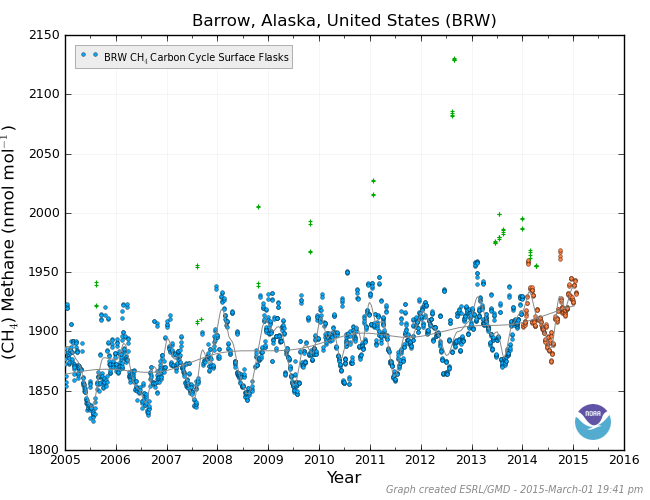
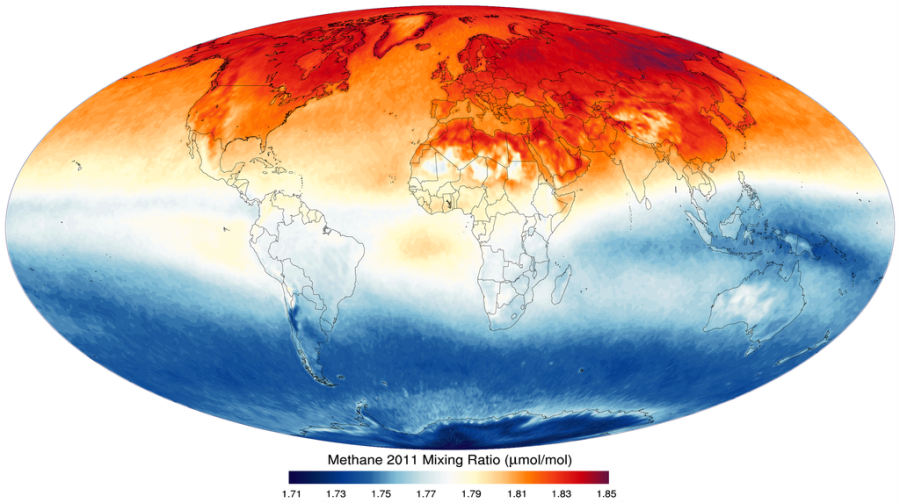

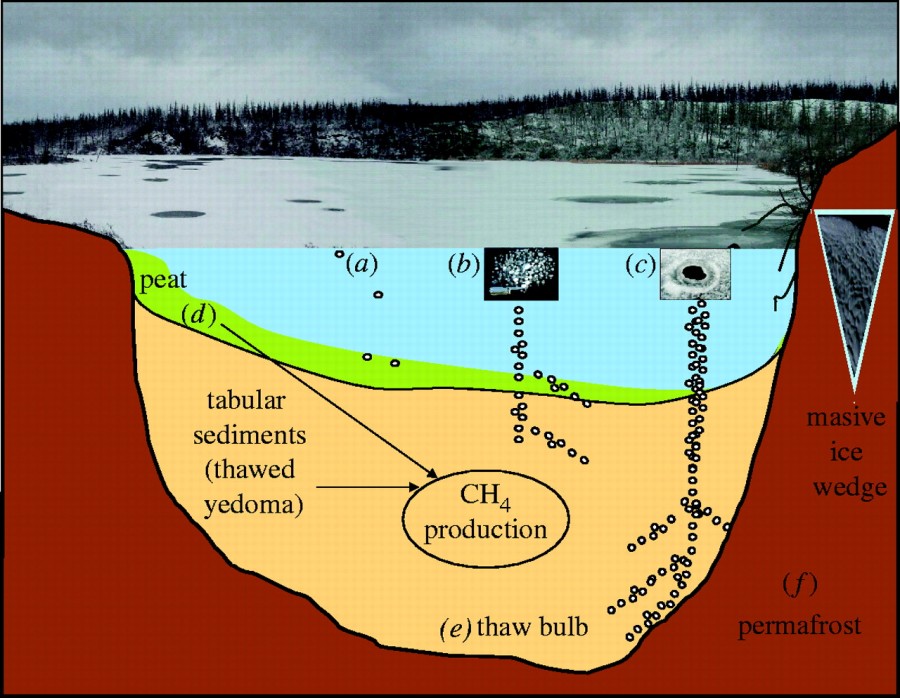
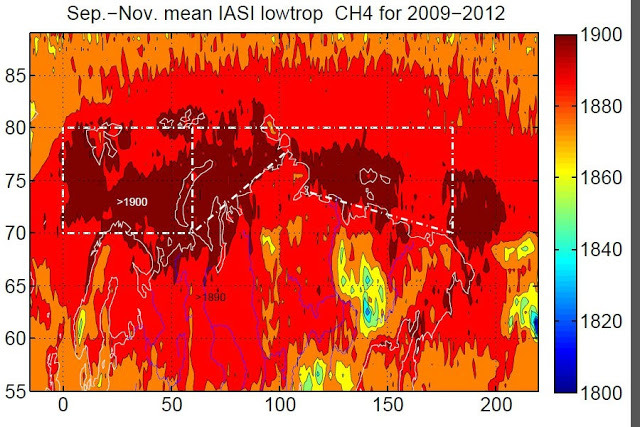

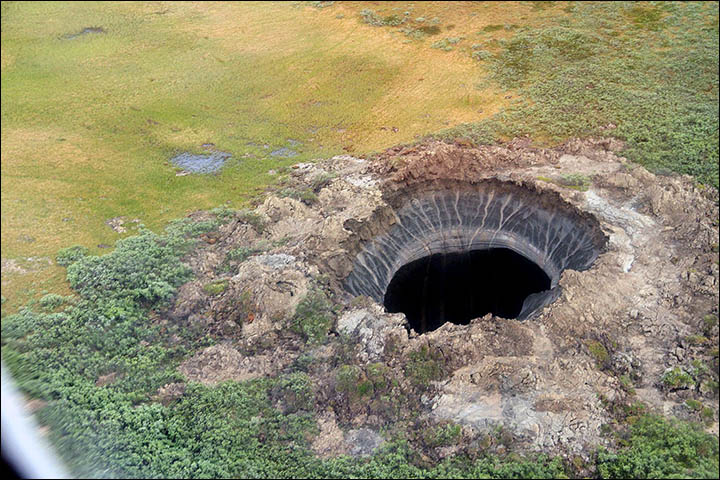
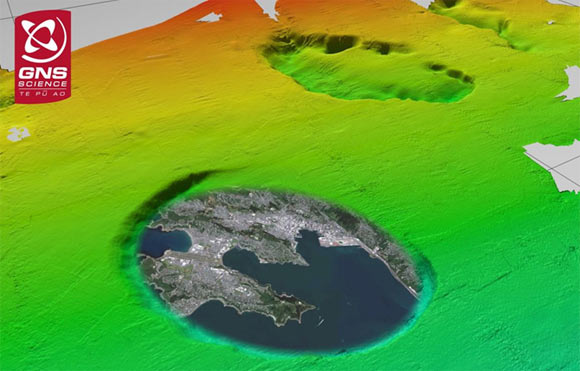
I understand (sort of) the scientific reticence to claim that A does not equal B, but... if it looks like duck, quacks like a duck, walks like a duck and taste like a duck... it's a duck.
ReplyDeleteThe debate about catastrophic methane release seems to have already answered its own questions. The refusal to believe it is simply the only 'question' that really remains.
It is quite obvious that abrupt methane releases have occurred, are occurring and will occur again - with increasing frequency. Virtually ALL of the evidence on each of these points indicates this. Therefore, it is not a question about "if" a catastrophic methane release "will" occur. The questions is simply "Why don't we believe it?".
Denial exists in huge quantities within the scientific community which requires hard proof - which is ONLY obtained AFTER the facts or events occur. Which will be far, far too late. "Believing" at that point will be no different then denying bullets travel faster then sound with a gun pointed at your head. You may not be dead "yet", but you certainly will be, whether you "believe" it or not.
Catastrophic methane releases are facts. They are not theory. Escaping methane hydrates, destabilized permafrost, thermokarst lakes and many other current facts are also evidence. And so is Earth's history. A does mean B in this case. We will see more catastrophic methane releases. How bad, how many, and where are the ONLY real questions - whether we "believe" it or not.
Best info on Methane I have read... thanks so much for finding this.
ReplyDelete